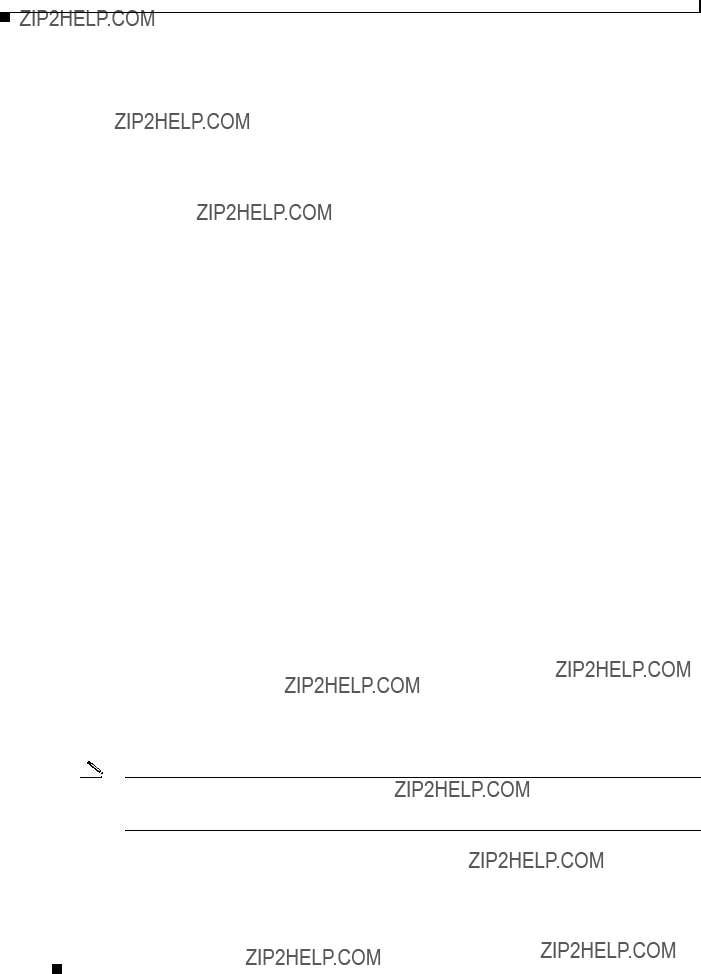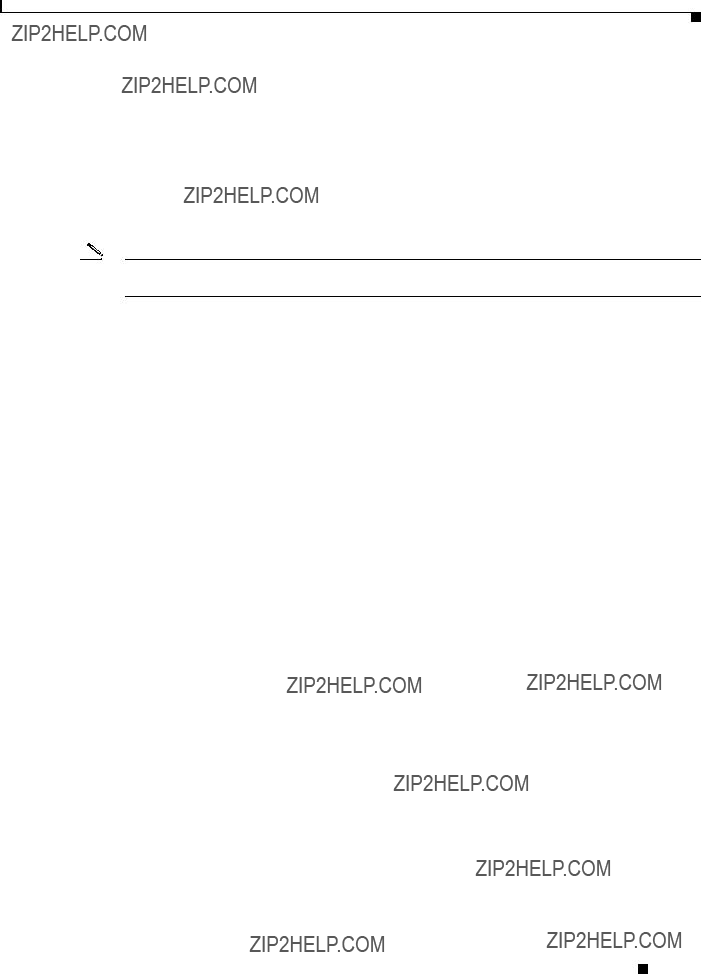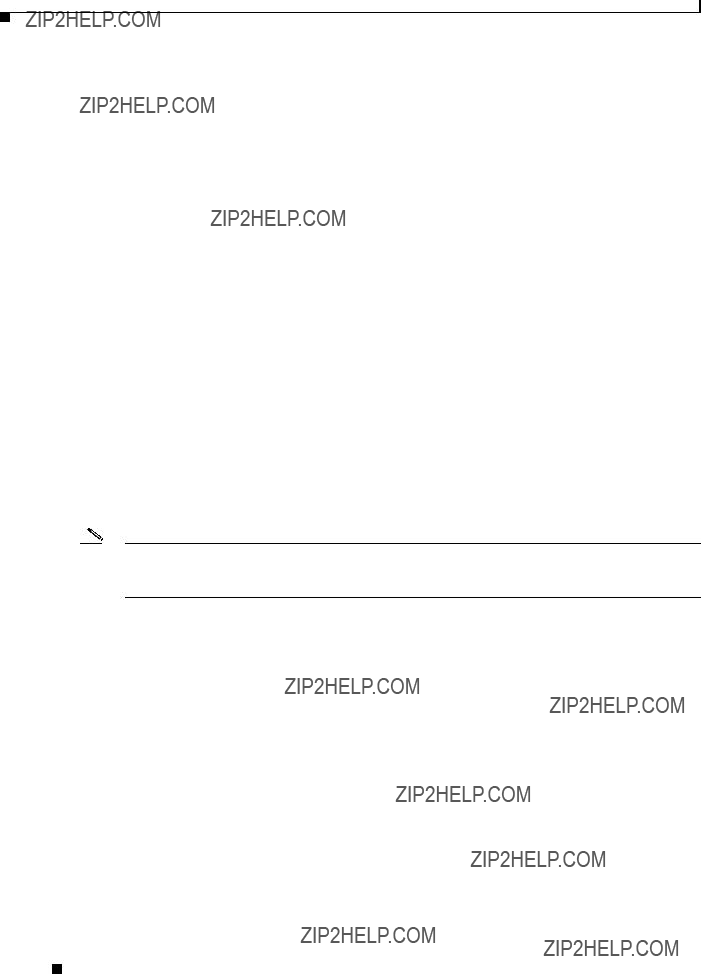C H A P T E R 10
1-Port Gigabit Ethernet Half-Height Line Card
Overview
This chapter describes the Cisco 10000 series 1-port Gigabit Ethernet half-height line card (referred to as the 1-port Gigabit Ethernet half-height line card), and contains the following sections:
???Line Card Summary, page 10-1
???Software and Hardware Compatibility, page 10-3
???Line Card, Router, and Processor Compatibility, page 10-3
???LEDs, page 10-4
???Physical Specifications, page 10-5
???Slot Locations, page 10-6
???Cables and Connectors, page 10-7
???SFP Module Configurations and Specifications, page 10-9
Line Card Summary
Chapter 10 1-Port Gigabit Ethernet Half-Height Line Card Overview
Line Card Summary
The 1-port Gigabit Ethernet half-height line card:
???Contains one Gigabit Ethernet port that provides a trunk uplink to switches and core routers
???Provides the Cisco 10000 series with an IEEE 802.3z-compliant Ethernet interface that can run up to 1 Gbps in full duplex mode.
Note Bandwidth can reach a theoretical maximum of 711 Mbps due to backplane limitations of the PRE-1 (Part Number ESR-PRE1). The backplane bandwidth is not a limitation when using the PRE-2
(Part Number ESR-PRE2) or future PREs.
You install this line card in a Cisco 10000 chassis half-height slot carrier, which you must first install in the Cisco 10000 chassis slot. You can run this line card with a second line card in the other subslot.
Cisco 10000 Series Routers Line Card Hardware Installation Guide
Chapter 10 1-Port Gigabit Ethernet Half-Height Line Card Overview
Software and Hardware Compatibility
The line card uses a small form-factor pluggable (SFP) module that supports a variety of Gigabit Ethernet interface types (SX, LX/LH, ZX, BASET, and CWDM), which you can change or upgrade at any time.
For more information about Coarse Wave Division Multiplexer (CWDM) Small Form-Factor Pluggable (SFP) laser optical transceiver modules, see the Cisco CWDM GBIC and CWDM SFP Installation Note at:
http://www.cisco.com/univercd/cc/td/doc/product/gbic_sfp/gbic_doc/78_15222.htm
Note Only SFP modules purchased from Cisco work with the Gigabit Ethernet line card software.
Note For the longwave 1470 nm laser SFP module (CWDM-SFP-1470=), use a long reach single-mode cable or an attenuator with a short reach cable.
If you are a registered Cisco.com user, see Feature Navigator for supported features.
Software and Hardware Compatibility
To check the minimum software requirements of Cisco IOS software for the hardware installed on your router, Cisco maintains the Software Advisor tool on Cisco.com. This tool does not verify whether line cards within a system are compatible, but provides the minimum Cisco IOS requirements for individual hardware line cards, modules, or options.
Note Access to this tool is limited to users with Cisco.com login accounts.
To access Software Advisor, go to Cisco.com and click Login, type Software Advisor in the Search box, and click Go. Click the link for the Software Advisor tool.
Choose a product family or enter a specific product number to search for the minimum supported software release needed for your hardware.
Line Card, Router, and Processor Compatibility
Table 10-2 lists router model, line card, and processor compatibility.
1.Using the 1-port Gigabit Ethernet half-height line card with the PRE-1 is not recommended because of the bandwidth limitations on the PRE-1. Line rate speed in not achievable with the configuration of the 1-port Gigabit Ethernet half-height line card and PRE-1.
Cisco 10000 Series Routers Line Card Hardware Installation Guide
Chapter 10 1-Port Gigabit Ethernet Half-Height Line Card Overview
LEDs
LEDs
The 1-port Gigabit Ethernet half-height line card LEDs are listed in Figure 10-1.
Figure 10-1 1-Port Gigabit Ethernet Half-Height Line Card Faceplate Description
Table 10-3 provides a description of the 1-port Gigabit Ethernet half-height line card LEDs.
Cisco 10000 Series Routers Line Card Hardware Installation Guide
Chapter 10 1-Port Gigabit Ethernet Half-Height Line Card Overview
Physical Specifications
Note Because this line card operates in full-duplex mode, both the RX and TX LEDs can be on at the same time.
Physical Specifications
The 1-port Gigabit Ethernet half-height line card physical specifications appear in Table 10-4.
Table 10-4 1-Port Gigabit Ethernet Half-Height Line Card Physical Specifications
Cisco 10000 Series Routers Line Card Hardware Installation Guide
Chapter 10 1-Port Gigabit Ethernet Half-Height Line Card Overview
Slot Locations
Slot Locations
The line card slot designations are shown in this section. Figure 10-2 shows line card slot designations for the Cisco 10008 router and Figure 10-3 shows line card slot designations for the Cisco 10005 router.
Figure 10-2 Line Card Slot and Subslot Designations for the Cisco 10008 Router
1
2
POWER
FAULT
MISWIRE
3
POWER FAULT MISWIRE
 126064
126064
The 1-port Gigabit Ethernet half-height line card can be installed in subslot 0 or subslot 1 of the line card slot 1 through slot 8. The Cisco 10000 Carrier is used with the 1-Port Gigabit Ethernet Half Height line card.
Cisco 10000 Series Routers Line Card Hardware Installation Guide
Chapter 10 1-Port Gigabit Ethernet Half-Height Line Card Overview
Cables and Connectors
Figure 10-3 Line Card Slot and Subslot Designations for the Cisco 10005 Router
The 1-port Gigabit Ethernet half-height line card can be installed in any subslot in line card slot 1 through slot 5. The Cisco 10000 Carrier is used with the 1-port Gigabit Ethernet half-height line card.
Cables and Connectors
The 1-port Gigabit Ethernet half-height line card supports single Ethernet interfaces based on SFP technology. The following SFP modules are supported by this line card:
???1000BASE-SX SFP???The SFP-GE-S=, 1000BASE-SX SFP module operates on ordinary multimode fiber-optic link spans of up to 550 meters in length.
???1000BASE-LX/LH SFP???The SFP-GE-L=, 1000BASE-LX/LH SFP module operates on ordinary single-mode fiber-optic link spans of up to 10,000 meters in length.
???1000BASE-ZX SFP???The GLC-ZX-SM=, 1000BASE-ZX SFP module operates on ordinary single mode fiber-optic link spans of up to 70 kilometers in length. Link spans of up to 100 km are possible using premium single-mode fiber or dispersion-shifted single-mode fiber. The SFP module provides an optical link budget of 23 dB???the precise link span length depends on multiple factors such as fiber quality, number of splices, and connectors.
???1000BASE-T SFP???The SFP-GE-T (1000BASE-T copper SFP module) provides full-duplex Gigabit Ethernet connectivity to high-end workstations and between wiring closets over an existing copper network infrastructure. The SFP-GE-T maximum cabling distance is 328 feet (100 m).
Cisco 10000 Series Routers Line Card Hardware Installation Guide
Chapter 10 1-Port Gigabit Ethernet Half-Height Line Card Overview
Cables and Connectors
The Coarse Wave Division Multiplexer (CWDM) Small Form-Factor Pluggables (SFPs) are hot-swappable, laser optical transceiver modules. You can plug these SFPs into standard receptacles in Cisco routers and switches to convert Gigabit Ethernet electrical signals into a single-mode fiber-optic (SMF) interface. The router supports the following CWDM SFPs:
???CWDM-SFP-1470 SFP???Longwave 1470 nm laser, single mode
???CWDM-SFP-1490 SFP???Longwave 1490 nm laser, single mode
???CWDM-SFP-1510 SFP???Longwave 1510 nm laser, single mode
???CWDM-SFP-1530 SFP???Longwave 1530 nm laser, single mode
???CWDM-SFP-1550 SFP???Longwave 1550 nm laser, single mode
???CWDM-SFP-1570 SFP???Longwave 1570 nm laser, single mode
???CWDM-SFP-1590 SFP???Longwave 1590 nm laser, single mode
???CWDM-SFP-1610 SFP???Longwave 1610 nm laser, single mode
You can connect the CWDM SFPs to CWDM passive optical system optical add/drop multiplexer (OADM) or multiplexer/demultiplexer plug-in modules using single-mode fiber-optic cables with standard LC connectors. For more information, see the Cisco CWDM GBIC and CWDM SFP Installation Note at the following URL:
http://www.cisco.com/univercd/cc/td/doc/product/gbic_sfp/gbic_doc/78_15222.htm
When shorter distances of single-mode fiber are used, it may be necessary to insert an inline optical attenuator in the link to avoid overloading the receiver. A 5-decibel (dB) or 10-dB inline optical attenuator should be inserted between the fiber-optic cable plant and the receiving port on the GLC-ZX-SM= at each end of the link whenever the fiber-optic cable span is less than 25 km. CWDM SFPs require a minimum of 12-dB optical attenuation. If the fiber itself is not providing the attenuation, then an attenuator device is required.
Note The required line card SFP module is shipped installed in the line card. Cisco sells individual SFP modules separately and you can change the type of Gigabit Ethernet interface supported by this line card by changing its SFP module.
Use these guidelines for installing SFP modules:
???There is no correlation of the type of latch to the model (such as SX or LH) or technology type (such as Gigabit Ethernet) of SFP modules. Always read the label on the SFP module to determine the technology type and model.
???You can install and remove SFP modules with power on to the system.
???Disconnect all cables before removing or installing an SFP module. We strongly recommend that you do not install or remove the SFP module with optical fiber cables attached to it.
???SFP modules are keyed to prevent incorrect insertion.
Cisco 10000 Series Routers Line Card Hardware Installation Guide
Chapter 10 1-Port Gigabit Ethernet Half-Height Line Card Overview
SFP Module Configurations and Specifications
SFP Module Configurations and Specifications
Table 10-5 lists the SFP configurations.
Table 10-7 lists the SFP port cabling specifications.
Chapter 10 1-Port Gigabit Ethernet Half-Height Line Card Overview
SFP Module Configurations and Specifications
1.A mode-conditioning patch cord is required. Using an ordinary patch cord with MMF, 1000BASE-LX/LH SFP modules, and a short link distance (tens s of meters) can cause transceiver saturation resulting in an elevated bit error rate (BER). In addition, when using the LX/LH SFP module with 62.5-micron diameter MMF, you must install a mode-conditioning patch cord between the SFP module and the MMF cable on both the transmit and receive ends of the link. The mode-conditioning patch cord is required for link distances greater than 984 ft (300 m).
2.Dispersion-shifted single-mode fiber-optic cable.
Table 10-8 provides SFP module power budget information.
1.For fiber types 50/125 ???m, NA = 0.20 fiber and 62.5/125 ???m, NA = 0.275 fiber.
2.For fiber types 50/125 ???m MMF and 62.5/125 ???m MMF.
3.For fiber types 9/125 ???m SMF.
4.For fiber types 62.5/125 ???m MMF and 50/125 ???m MMF.
5.For fiber types 9/125 ???m SMF, 62.5/125 ???m MMF, and 50/125 ???m MMF.
6.For fiber types 50/125 ???m MMF and 62.5/125 ???m MMF.
7.For fiber type 10 ???m SMF.
Related Documentation
For related documentation on SFP modules, see the following publications:
???Gigabit Interface Converter (GBIC) Module and Small Form-Factor Pluggable (SFP) GBIC Module Installation Information and Specifications
???Cisco SFP Optics for Gigabit Ethernet Applications Data Sheet
???Cisco 1000BASE-T SFP Data Sheet

Chapter 10 1-Port Gigabit Ethernet Half-Height Line Card Overview
SFP Module Configurations and Specifications
Mode-Conditioning Gigabit Ethernet Patch Cord Description
A mode-conditioning patch cord can be used with the SFP-GE-L= (SFP module) to allow reliable laser transmission between the single-mode laser source on the SFP module and a multimode optical fiber cable.
When an unconditioned laser source designed for operation on single-mode optical fiber is directly coupled to a multimode optical fiber cable, an effect known as differential mode delay (DMD) might result in a degradation of the modal bandwidth of the optical fiber cable.
This degradation results in a decrease in the link span (the distance between a transmitter and a receiver) that can be supported reliably. The effect of DMD can be overcome by conditioning the launch characteristics of a laser source. A practical means of performing this conditioning is to use a device called a mode-conditioning patch cord.
A mode-conditioning patch cord is an optical fiber cable assembly that consists of a pair of optical fibers terminated with connector hardware. Specifically, the mode-conditioning patch cord is composed of a single-mode optical fiber permanently coupled off-center (see Offset in Figure 10-4) to a graded-index multimode optical fiber. Figure 10-4 shows a diagram of the mode-conditioning patch cord assembly.
Figure 10-4 Mode-Conditioning Patch Cord Assembly for an SFP Module
2
RX TX
The mode-conditioning patch cord assembly is composed of duplex optical fibers, including a single-mode-to-multimode offset launch fiber connected to the transmitter, and a second conventional graded-index multimode optical fiber connected to the receiver. The use of a plug-to-plug patch cord maximizes the power budget of multimode 1000BASE-LX and 1000BASE-LH links.
The mode-conditioning patch cord is required to comply with IEEE standards. The IEEE found that link distances could not be met with certain types of fiber-optic cable cores. The solution is to launch light from the laser at a precise offset from the center, which is accomplished by using the mode-conditioning patch cord. At the output of the patch cord, the SFP-GE-L= is compliant with the IEEE 802.3z standard for 1000BASE-LX.
Go to Chapter 16, ???Preparing for Installation??? to begin the installation or replacement of the line card. For troubleshooting information, see Chapter 18, ???Troubleshooting the Installation.???
Chapter 10 1-Port Gigabit Ethernet Half-Height Line Card Overview
SFP Module Configurations and Specifications








 126064
126064




















 132318
132318



